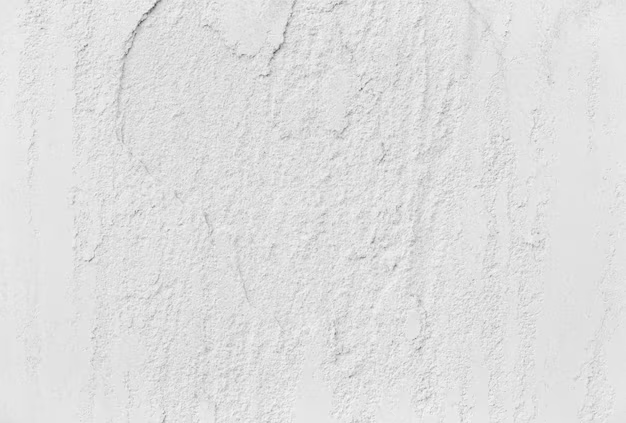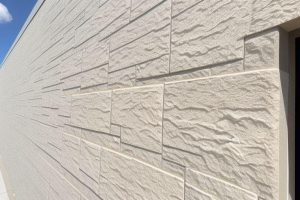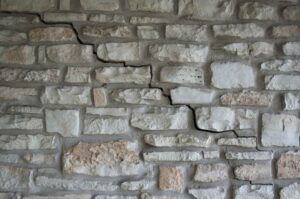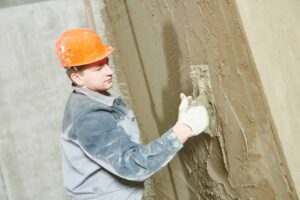Stucco Paint Guide
This guide covers the best paint for stucco. Click to jump right in:
- Best Paint for Interior Stucco Walls
- Best Paint for Exterior Stucco Walls
- Best Paint Brands for Stucco
- Best Sheen Paint for Stucco
Call (780) 710-3972 if you have questions or need stucco painting services.
- Acrylic Latex Paint for Interior Stucco
- Features:
Acrylic latex paint is one of the most popular choices for interior stucco walls. It adheres well to textured surfaces, offers excellent flexibility, and resists cracking over time. - Benefits:
- Wide color availability to suit any interior decor.
- Low VOC options ensure safe indoor air quality.
- It is durable and easy to clean, ideal for high-traffic areas like hallways and living rooms.
- Best Use Cases:
Rooms that require durable and washable finishes, such as family rooms, kitchens, and children’s bedrooms.
- Eggshell and Satin Finishes for Interior Stucco
- Features:
These finishes balance aesthetic appeal and practicality. They provide a slight sheen that enhances the texture of stucco while being easy to maintain. - Benefits:
- Satin finishes resist stains and scuffs, making them suitable for frequently used areas.
- Eggshell is less shiny than satin but still easier to clean than matte finishes.
- Best Use Cases:
Living areas, dining rooms, and bedrooms where a refined look and easy maintenance are desired.
- Flat and Matte Paint for Interior Stucco
- Features:
Flat and matte paints offer a non-reflective finish, excellent for hiding imperfections on stucco walls. - Benefits:
- Absorbs light, creating a smooth and uniform appearance.
- It is ideal for low-traffic areas where durability isn’t a priority.
- Best Use Cases:
Formal spaces like offices, study rooms, or guest bedrooms where minimal cleaning is required.
Best Paint Colors for Interior Stucco Walls
- Neutral Tones
Neutral colors such as beige, taupe, and warm gray are popular for interior stucco walls.
- Why Choose Neutrals:
- They create a cozy and welcoming atmosphere.
- Neutrals are versatile and pair well with various furniture and decor styles.
- Best Rooms:
Living rooms, dining rooms, and bedrooms are where you want a timeless look.
- Earthy Shades
Colors like terracotta, clay, and muted greens reflect natural elements.
- Why Choose Earthy Tones:
- They complement the organic texture of stucco.
- Earthy tones bring warmth and depth to spaces.
- Best Rooms:
Kitchens, sunrooms, and areas with abundant natural light.
- Light and Airy Colors
Soft shades like off-white, cream, and pastel blue brighten interior spaces.
- Why Choose Light Colors:
- They create an illusion of spaciousness.
- Light colors subtly enhance the textured patterns of stucco.
- Best Rooms:
Bathrooms, small bedrooms, or areas where you want to maximize light.
- Bold Accents
Deep hues such as navy blue, charcoal, or dark green can make a statement.
- Why Choose Bold Colors:
- They add drama and contrast to neutral or light-colored walls.
- Bold colors work well on feature walls to highlight stucco texture.
- Best Rooms:
Accent walls in living rooms, offices, or entertainment spaces.
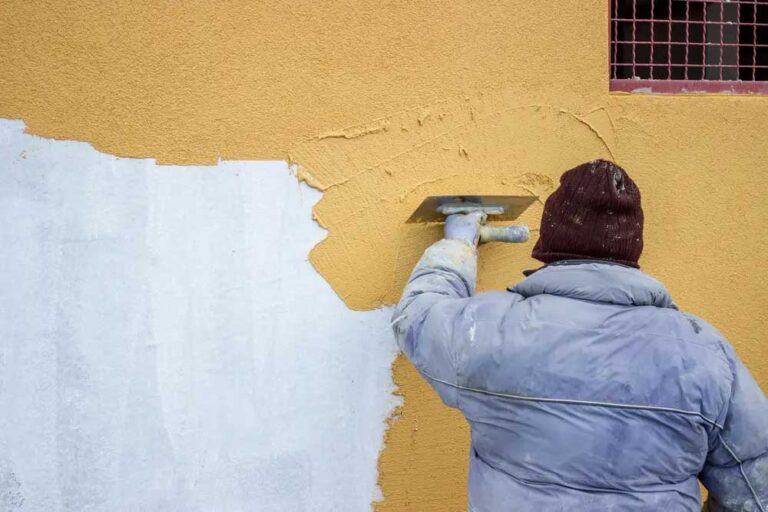
Best Paint for Exterior Stucco Walls
- Elastomeric Paint for Exterior Stucco
- Features:
Elastomeric paint is specifically designed for exterior stucco. Its thick, flexible coating provides superior crack-bridging and waterproofing. - Benefits:
- Highly durable, with a lifespan of up to 20 years.
- Excellent for preventing water damage in rainy or humid climates.
- Seals hairline cracks, extending the life of the stucco.
- Best Use Cases:
Homes in regions with extreme weather, such as heavy rain, snow, or freeze-thaw cycles.
- Acrylic Latex Paint for Exterior Stucco
- Features:
Acrylic latex paint offers durability and flexibility, making it ideal for stucco surfaces exposed to the elements. - Benefits:
- UV-resistant, preventing color fading in sunny climates.
- Breathable, allowing moisture to escape and reducing the risk of blistering or peeling.
- Easy to apply with both rollers and sprayers.
- Best Use Cases:
Properties in areas with moderate weather, including sunny and arid regions.
- Masonry Paint for Exterior Stucco
- Features:
Masonry paint is designed for porous surfaces like stucco, providing excellent adhesion and durability. - Benefits:
- Breathable, ensuring moisture doesn’t get trapped under the paint.
- Resistant to cracking and peeling, even in fluctuating temperatures.
- Available in matte and satin finishes for versatile aesthetics.
- Best Use Cases:
Older stucco surfaces or homes in dry climates where breathability is essential.
- Satin and Low-Luster Finishes for Exterior Stucco
- Features:
Satin and low-luster finishes offer a subtle shine that enhances the stucco’s natural texture while providing easy maintenance. - Benefits:
- Dirt-resistant and washable, maintaining a fresh appearance over time.
- It balances durability and visual appeal without being overly glossy.
- Best Use Cases:
Homes in urban or suburban areas where dirt accumulation is common, such as near busy streets.
Best Paint Colors for Exterior Stucco Walls
- Warm Neutrals
Shades like sand, tan, and ivory are classic for exterior stucco.
- Why Choose Warm Neutrals:
- They harmonize with natural surroundings.
- Warm neutrals complement diverse architectural styles.
- Best Use:
Traditional homes, Mediterranean-style buildings, or properties in sunny regions.
- Earth-Inspired Tones
Colors like sage green, terracotta, and rust blend well with outdoor landscapes.
- Why Choose Earth Tones:
- They create a rustic and grounded appearance.
- These colors are excellent for homes in desert or forested areas.
- Best Use:
Ranch homes, cottages, or properties with extensive greenery.
- Cool Grays and Blues
Cool tones like slate gray, steel blue, and light gray give a modern look.
- Why Choose Cool Colors:
- They offer a sleek and contemporary vibe.
- These shades provide excellent contrast with white trim or dark roofs.
- Best Use:
Modern homes, urban properties, or areas with mild climates.
- White and Off-White
Classic white and creamy off-white shades are timeless choices.
- Why Choose White:
- They reflect sunlight, keeping the building cooler in hot climates.
- White stucco provides a clean and minimalist aesthetic.
- Best Use:
Mediterranean-style homes, minimalist designs, or coastal properties.
- Bold and Dramatic Hues
Deep colors like charcoal black, navy blue, and deep brown make a striking statement.
- Why Choose Bold Colors:
- They add sophistication and depth to the exterior.
- Bold hues pair well with lighter trim or natural stone accents.
- Best Use:
Homes seeking a luxurious or high-contrast appearance.
Best Paint Brands for Stucco
The right paint brand helps achieve a durable, visually appealing finish on stucco surfaces.
1. Sherwin-Williams Loxon
- Features and Benefits:
- It is designed specifically for masonry and concrete surfaces, making it ideal for stucco.
- Offers exceptional moisture resistance, preventing water from seeping into porous stucco surfaces.
- Highly durable and formulated to resist cracking and peeling, even in extreme weather conditions.
- It provides a breathable coating, allowing trapped moisture to escape without compromising the paint’s integrity.
- Product Line Highlights:
- Loxon XP: Superior for waterproofing and bridging hairline cracks, ideal for regions with heavy rain or high humidity.
- Loxon Self-Cleaning Acrylic Coating: Designed to shed dirt and maintain a fresh appearance, perfect for properties in dusty or urban environments.
- Recommended Use:
- It is ideal for homes or buildings in climates with frequent rain, snow, or temperature fluctuations.
- It works well for older stucco surfaces that need enhanced durability.
2. Behr Premium Elastomeric
- Features and Benefits:
- Known for its high elasticity, this paint stretches with the surface, effectively covering and sealing hairline cracks.
- It provides a waterproof barrier while maintaining flexibility, ensuring long-lasting protection against moisture.
- It offers excellent UV resistance, preventing fading and degradation caused by sunlight.
- Available in a variety of colors with excellent color retention over time.
- Product Line Highlights:
- Behr Premium Elastomeric Masonry, Stucco & Brick Paint: This paint is specifically formulated for textured surfaces, offering a thicker coating that adheres well to stucco.
- Resists peeling and blistering, even in high-moisture areas.
- Recommended Use:
- It is best for homes with stucco, which is prone to cracking or in areas with heavy rainfall and frequent freeze-thaw cycles.
- Suitable for both residential and commercial buildings requiring long-term waterproofing and protection.
3. Valspar Duramax
- Features and Benefits:
- Designed for extreme weather conditions, it provides superior UV and weather resistance.
- It is known for its all-season application capability, allowing use even in temperatures as low as 35°F (1.6°C).
- Includes built-in mildew and algae-resistant finish, maintaining a clean appearance for years.
- Vibrant color retention ensures that your property looks fresh and appealing over time.
- Product Line Highlights:
- Valspar Duramax Exterior Paint + Primer: Combines primer and paint, simplifying the application process and reducing project time.
- Offers advanced adhesion properties, ensuring a strong bond to stucco and masonry surfaces.
- Recommended Use:
- It is ideal for regions with intense sunlight or fluctuating temperatures that can cause other paints to degrade.
- Perfect for homeowners looking for a low-maintenance, fade-resistant finish.
4. Benjamin Moore Aura
- Features and Benefits:
- Known for its innovative waterborne technology, it combines the durability of oil-based paints with the easy cleanup of water-based paints.
- It offers superior breathability, making it an excellent choice for stucco as it prevents moisture buildup beneath the surface.
- It provides mildew and mold resistance, essential for homes in humid climates.
- Exceptional color depth and vibrancy, with a wide range of finishes to suit various aesthetic preferences.
- Product Line Highlights:
- Benjamin Moore Aura Exterior Paint: Formulated with Color Lock® technology for long-lasting color and durability.
- Maintains a smooth, even finish on textured surfaces like stucco, resisting chalking and fading.
- Recommended Use:
- Great for homeowners seeking premium paint with a rich, high-end appearance.
- Suitable for all climates, especially those with high humidity or frequent precipitation.
Best Sheen Paint for Stucco
The choice of paint sheen for stucco depends on the location (interior or exterior), desired aesthetic, and maintenance needs. Stucco’s textured surface benefits from specific sheens that enhance its appearance while providing practical durability. Below are the best sheens for stucco and when to use them.
- Satin (Low-Luster) Finish
- Best For: Both interior and exterior stucco.
- Features:
- The slight sheen highlights the texture of the stucco without being overly reflective.
- It provides a durable, easy-to-clean surface that is ideal for high-traffic areas.
- It resists dirt and mildew, making it perfect for exteriors exposed to the elements.
- Use Case:
- Exteriors of residential and commercial buildings.
- Interior spaces like kitchens and bathrooms that require washable surfaces.
- Eggshell Finish
- Best For: Interior stucco walls.
- Features:
- A minimal sheen with a soft, subtle finish enhances the stucco’s natural texture.
- Easier to clean than flat paint but less reflective than satin.
- Use Case:
- Living rooms, bedrooms, and hallways where a balance of elegance and practicality is desired.
- Flat (Matte) Finish
- Best For: Interior stucco or low-maintenance exterior surfaces.
- Features:
- Non-reflective finish that hides imperfections in the stucco texture.
- It is less durable and harder to clean than satin or eggshell, making it better suited for low-traffic areas.
- Use Case:
- Formal interior spaces like offices or guest rooms.
- Exterior walls in shaded areas or places with minimal exposure to dirt and weather.
- Semi-Gloss Finish
- Best For: Accents on stucco.
- Features:
- The higher sheen is highly durable and easy to clean.
- It is not typically recommended for large stucco areas due to its reflective nature, which can highlight imperfections.
- Use Case:
- Exterior trims, doors, and decorative accents.
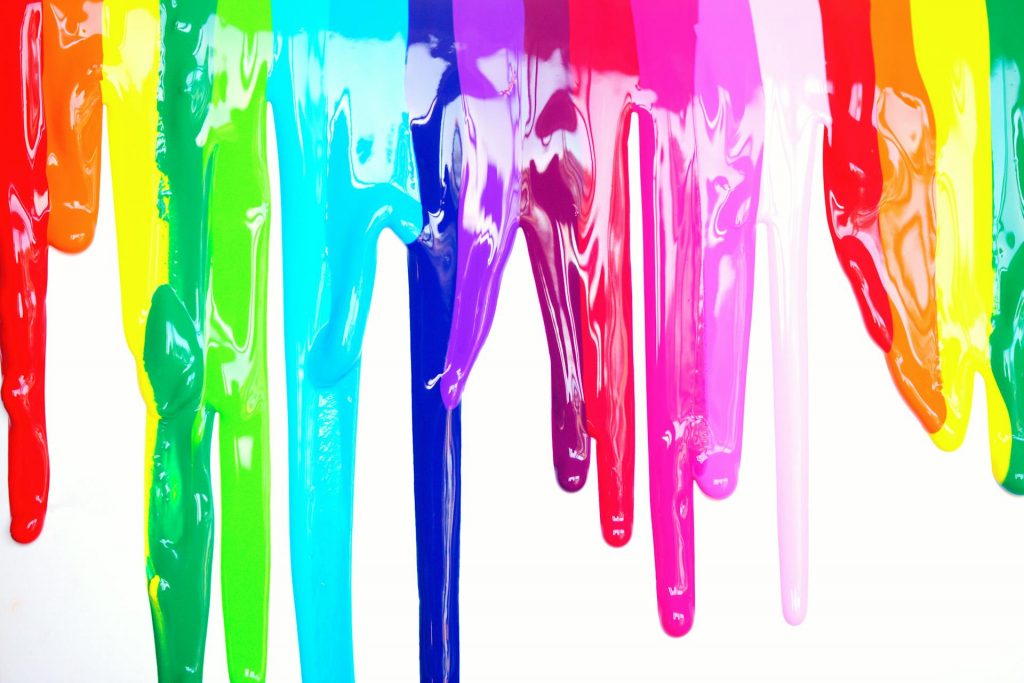
How to Choose the Ideal Paint for Your Stucco
- Assess Durability:
Look for paints that withstand wear and tear, such as cracking, peeling, and fading. Elastomeric paints are highly durable, lasting up to 20 years, while acrylic paints balance longevity and affordability with a lifespan of 10–15 years. - Check for Breathability:
Stucco is a porous material that needs to release trapped moisture. Choose breathable paints like masonry or acrylic latex, which prevent water buildup beneath the paint, reducing the risk of bubbling or peeling. - Evaluate Climate Suitability:
Match the paint type to your local weather conditions. In humid or rainy climates, opt for elastomeric paint for its waterproof properties. UV-resistant acrylic paint helps prevent color fading and sun damage in sunny areas. - Ensure Texture Compatibility:
Stucco’s textured surface requires paint that adheres well and provides even coverage. Thicker paints, such as elastomeric, are excellent for textured surfaces as they penetrate and coat grooves effectively. - Choose the Right Color and Sheen:
Select colors that complement your home’s design and surroundings. Warm neutrals or earth tones are classic for exteriors, while light, airy colors work well for interiors. Satin or low-luster finishes are ideal for exteriors to resist dirt and maintain a clean look, while eggshell finishes offer a subtle sheen for interiors. - Prioritize Maintenance Ease:
Pick paints with dirt and mildew resistance, especially for exteriors exposed to the elements. This makes cleaning easier and keeps the surface looking fresh over time. - Consider Environmental Safety:
Use low-VOC or eco-friendly paints, especially for interior projects, to ensure better air quality. These options are safer for households and the environment. - Inspect for Hairline Cracks:
If your stucco has small cracks, choose elastomeric paint, which can bridge and seal them effectively, preventing further damage and providing a smooth finish. - Factor in Application Needs:
Elastomeric paints often require professional application due to their thickness and specific adhesion requirements, while acrylic paints are easier for DIY projects. - Align with Your Budget:
While high-quality paints may cost more upfront, they often save money in the long run by reducing the frequency of repainting and minimizing maintenance needs.
Depend Exteriors Offers Professional Stucco Painting Services
Depend Exteriors offers expert stucco painting services for residential and commercial properties in Edmonton and Alberta. With over 13 years of experience, we specialize in providing durable, high-quality finishes tailored to withstand Alberta’s harsh climate.
Our skilled team uses premium stucco paints, including elastomeric and acrylic options, ensuring weather resistance, vibrant color retention, and long-lasting results. Whether you need to refresh your exterior or protect your stucco from moisture, we deliver exceptional craftsmanship and customer satisfaction.
Call (780) 710-3972 for a free estimate to transform your property with professional stucco painting services.
FAQs
What paint is best to use on stucco?
The best paint for stucco is acrylic paint or elastomeric paint. Acrylic paint offers excellent adhesion, flexibility, and durability, while elastomeric paint provides superior crack bridging and waterproofing. Masonry paint is also a good option for breathable protection.
Is it better to spray or roll paint on stucco?
Spraying is generally better for stucco because it evenly covers the textured surface and penetrates crevices. Rolling can also be effective, but it may require extra effort to achieve consistent coverage. For best results, combine both methods—spray first and back-roll for even application.
Is painting over stucco a good idea?
Painting over stucco is a good idea if you use the right type of paint and prepare the surface properly. It enhances durability, protects against weather, and improves aesthetic appeal. However, ensure the stucco is in good condition and dry before painting.
Should stucco be painted flat or satin?
Stucco should be painted with a satin or low-sheen finish. Satin offers better resistance to dirt and stains, making it easier to clean than flat paint. However, compared to high-gloss finishes, satin still minimizes surface imperfections.
What sheen should you use on stucco?
The ideal sheen for stucco is satin or eggshell. These finishes balance durability and aesthetics, providing a subtle shine without emphasizing the texture’s flaws. Avoid high gloss, as it can look unnatural and highlight imperfections.
How about acrylic paint for stucco?
Acrylic paint is excellent for stucco because it adheres well, resists fading, and accommodates the material’s expansion and contraction. It’s versatile, affordable, and available in various colors, making it a popular choice for residential and commercial applications.
What about an elastomeric paint?
Elastomeric paint is a great option for stucco, particularly in areas prone to cracks or heavy rainfall. Its thick, flexible coating bridges small cracks and provides superior waterproofing. However, it requires careful preparation and application to ensure proper adhesion.

